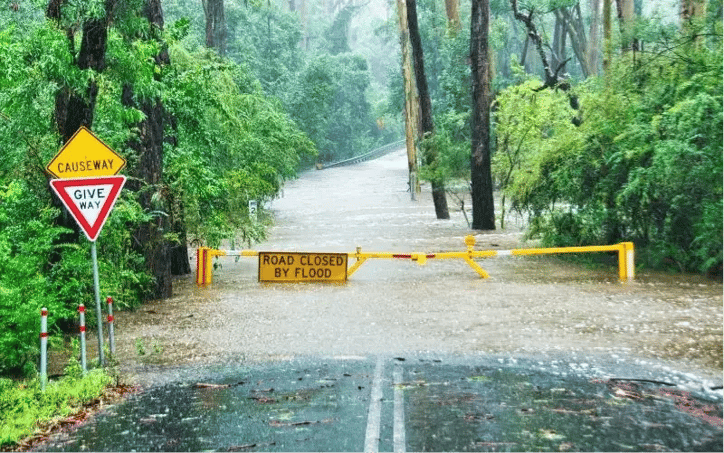When natural disasters and emergencies occur, communication becomes critical to managing the situation and ensuring the safety of the affected population. Quick and reliable dissemination of information is vital to ensure timely action, aid coordination, and raise public awareness. Typically, traditional communication channels such as television, radio, and social media are used for this purpose. However, there is also another tool that has proven to be highly effective in real-time outreach and dissemination of critical information: live blogs.
This article examines crisis communication challenges emerging during natural disasters and explains why live blogs can be helpful communication channels for NGOs, agencies, governments, and the media.
Challenges of crisis communication during natural disasters
When dealing with natural disasters and emergencies, agencies, NGOs, governments, and the media face different communication-related challenges. And even though some approaches have worked well in the past, others have demonstrated their shortcoming.
During the past crises, traditional means of communication, such as television and radio, used to be the most important sources of information. However, because of fixed broadcasting times, they cannot always provide up-to-date, detailed information and react quickly to ever-changing situations.
The situation has changed fundamentally with the advent of the Internet and social media. Social media allow people to instantly share and spread information, which can be both helpful and problematic during crises. While providing a platform for up-to-date information, they can, at the same time, become a venue for the spread of misinformation and rumors. This, in turn, can lead to confusion and panic among people.
📢 Rapid and reliable information dissemination:
It is critically important to quickly relay accurate information to affected people so that they can react according to the situation.
🗣️ Coordination of communication:
During crises, government agencies, NGOs, and other actors must coordinate communication efforts to avoid conflicting information and convey a consistent message.
💬 Dealing with misinformation and rumors:
Misinformation and rumors are often spread during natural disasters, resulting in confusion and panic. It is essential to clear things up and disseminate precise and reliable information.
📵 Accessibility of the target group:
As a result of a natural disaster, communication infrastructure may be damaged in some areas, hampering access to affected people.
👥 Taking different target groups into account:
People in crises have different needs and information demands. This should be considered in communication efforts, and various channels and formats should be used to reach a broad target group.
Reasons for using live blogs during natural disasters
Live blogs are an excellent solution to these challenges due to their numerous functions and features:
📲 A live blog enables real-time updates, constantly providing people with new information and keeping them up to speed. Different types of information can be integrated into a live blog, including text, images, videos, and social media feeds. This ensures that diverse and comprehensive coverage is delivered to helpers and those affected, giving them a holistic picture of the situation.
⁉️ During crises, information is often needed, and those affected have many questions. Live blogs allow readers to interact directly with information providers through comments, questions, or surveys. Such direct interaction facilitates a closer connection between readers and information providers and provides for needs-based communication.
ℹ️ Especially in emergencies, the information provided must be reliable and trustworthy. A live blog from official authorities, NGOs, or trusted media can become a reliable source. This minimizes the spread of misinformation and rumors and ensures clear and transparent communication.
🌐 Live blogs can be easily integrated into existing websites and apps. And, as a wider audience accesses them, dissemination of information happens faster and more efficiently. Thus, a more significant number of people will see and utilize it.
Here's how live blogs can be used during natural disasters
📱 Use in the media
Two following examples are the powerful illustration of how live blogs can be used as an effective crisis communication tool during natural disasters:
Al Jazeera used a live blog to cover the devastating earthquake in Turkey and Syria in 2023. The live blog served as a constantly updated source of information about the earthquake's impact, rescue efforts, and humanitarian response. The timely coverage allowed readers to follow the current situation, keeping them updated with the latest developments.
Tickaroo presents the numerous ways of reporting on hurricane developments in a Showcase-Live blog. From current weather warnings, evacuation instructions, and protective measures to pictures and videos on the ground - the live blog becomes a comprehensive source of information. Interaction features allowed readers to ask questions and engage directly with reporters. A live blog, therefore, can enable dynamic and up-to-date reporting.
📢 Use by NGOs and governmental organizations
Live blogs can be used not only by media companies, but also by government agencies and non-governmental organizations as an effective crisis communication tool. During natural disasters and emergencies, it is critical that government and non-government organizations quickly and accurately disseminate information to the public. Past experiences have shown how these institutions often lacked flexible communication options that could be set up on digital channels in a short period of time. Traditional communication channels such as press releases or social media posts are not enough to disseminate urgently needed information in real time.
This is where a live blog comes into play: due to its simple setup and intuitive operation, government agencies and NGOs can create a live blog quickly and use it as a central source of information. The initial setup can be done even before its deployment, so in case of an emergency, only the website integration has to be done.
Conclusion
Live blogs have proven to be a highly effective crisis communication tool during natural disasters and emergencies. Their real-time updates, interaction options, and versatile reporting provide valuable support to the media, agencies, NGOs, and government organizations. Quick and reliable dissemination of information ensured by live blogs helps protect lives, coordinate help, and raise public awareness. In cases where communication becomes crucial, live blogs emerge as a saving source of information.


